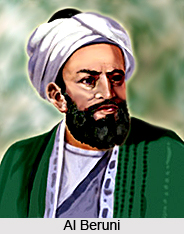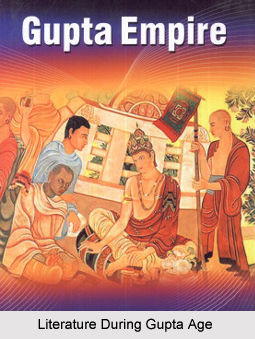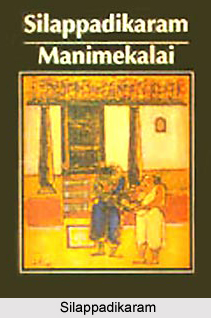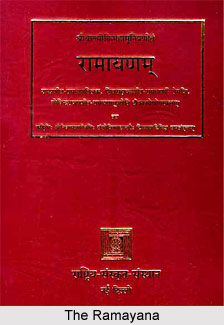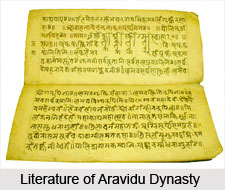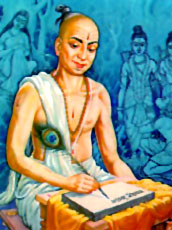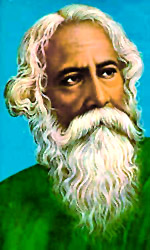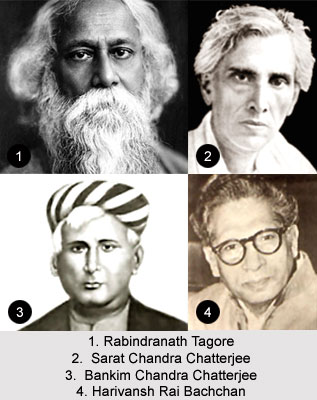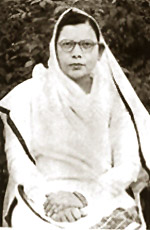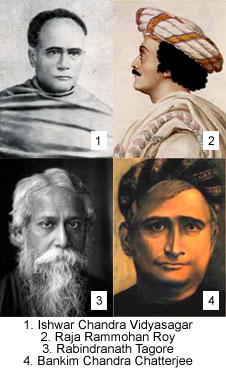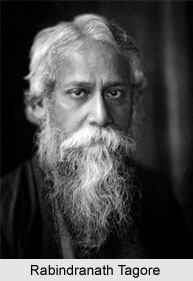 Hymns on Theosophy constitute the last class of hymns in the Atharva Veda. These hymns of theosophical and cosmogonic contents belong to the latest parts of the Atharva Veda. It is a strange combination of factors that can be seen in the Atharva Veda, i.e., magic incantations, spells and benedictions on the one hand and philosophical content on the other, as both magic and philosophy are far removed. However, a closer look at these hymns reveals that like the magic hymns, they mostly serve practical purposes. Though apparently philosophical, it is not the yearning and searching for truth, for the solution of dark riddles of the universe, which inspires the authors of these hymns. In fact the authors of these hymns are also conjurers who seem to be merely posing as philosophers.
Hymns on Theosophy constitute the last class of hymns in the Atharva Veda. These hymns of theosophical and cosmogonic contents belong to the latest parts of the Atharva Veda. It is a strange combination of factors that can be seen in the Atharva Veda, i.e., magic incantations, spells and benedictions on the one hand and philosophical content on the other, as both magic and philosophy are far removed. However, a closer look at these hymns reveals that like the magic hymns, they mostly serve practical purposes. Though apparently philosophical, it is not the yearning and searching for truth, for the solution of dark riddles of the universe, which inspires the authors of these hymns. In fact the authors of these hymns are also conjurers who seem to be merely posing as philosophers.
However, these philosophical hymns presuppose a fairly high development of metaphysical thought. The chief ideas of the Upanishads, the conception of a highest god as creator and preserver of the world (Prajapati), and even the ideas of an impersonal creative principle, besides a number of philosophical terms, such as, Brahman, Tapas, Asat, Prana, Manas etc must, at the time when these hymns originated, already have been the common property of large circles.
Many a deep and truly philosophical idea occasionally flashes forth in these hymns out of the mystical haze, but in most cases, it may be said that the Atharvan poet is not the originator of these ideas, that he has only utilized for his own purposes the ingeniousness of others. Thus it is certainly an idea worthy of a philosopher, that Kala, Time, is the first cause of all existence. Yet, it is the language of the mystic and not of the philosopher, when we read the same in Atharva Veda XIX, 53. But immediately in the following verses and in the following hymn (Atharva Veda, XIX, 54) all kinds of things are enumerated in a quite mechanical manner as originating in Time, and especially the various names of the Divine, as they are known at that time, are enumerated as being created by Kala.
Book XIII of the Atharva Veda consists of the long Rohita hymns in which a lot of disconnected matter seems to be thrown together. Thus, for instance, in the first hymn, Rohita, the "red one," i.e. the sun or a genius of the sun, is extolled as creative principle- "he created the heaven and the earth," "with strength he secured the earth and heaven". At the same time, however, an earthly king is glorified, and the heavenly king Rohita brought into connection with the earthly king in an intentionally confused manner. In the middle of it, however, there can be found incantations against enemies and rivals and against those who strike a cow with their feet. Again in hymn XIII, 3, Rohita is extolled as the highest being, but a refrain is attached, in which the same Rohita is told to crush, in his anger, him who torments Brahmin.
By the side of such sublime glorifications of Rohita, however, there are to be found instances of the mystical play of ideas, as when it is said that the two sacrificial melodies Brihat and Rathantara have brought forth Rohita, or when the metre Gayatri is designated as "the lap of immortality." It would be vain to attempt to lighten the mystical semi-darkness which surrounds such and similar verses.
The Cow and Ox are also praised in these hymns and behind this praise is discovered a very practical purpose. It is said that the heaven and earth and the waters are protected by the cow. The heaven and earth and the waters are protected by the cow. A hundred pails, a hundred milkers, a hundred cow-herds are on her back. The gods who breathe in the cow, they know the cow. The cow is the mother of the warrior; sacrifice is the weapon of the cow, thought originated in her. In this manner it proceeds till this secret doctrine reaches its climax in the words: "The cow alone is called Immortality, the cow alone worshipped as death; the cow became this universe, gods, people, Asura, manes and seers (they all are the cow)." But now follows the practical use: Only he who knows this great secret may accept a cow as a gift, and he who gives a cow to the Brahmins, gains all worlds.
"The gods live by the cow, and also man lives by the cow;
The cow is this whole world, as far as the sun looks down."
Just as the Rohita, the Ox, and the Cow are praised as the Highest Being, so there is one hymn (XI, 5) in which the Brahmacarin, the Vedic student, is celebrated in a similar way. And again in the still more mysterious cycle of hymns forming Book XV of the Samhita, the Highest Brahman is conceived and exalted as the Vratya- both as the heavenly Vratya, identified with the Great God (Mahadeva), the Lord Rudra, and as his prototype, the earthly Vratya. The Vratyas were certain, probably Eastern, tribes, whether Aryan or non-Aryan, but certainly living outside the pale of Brahmanism, roving about in bands-on rough wagons covered with boards in a rather war-like fashion, owners of cattle, having their own peculiar customs and religious cults, whose members however could be received into Brahmanical society by means of certain sacrificial rites and ceremonies. Such a Vratya who has already been converted to Brahmanism, seems to be glorified in the Vratya book of the Atharva Veda.
Immeasurably higher than this verse-making, which is neither philosophy nor poetry, stands one hymn of the Atharva Veda, which, on account of a few verses which relate to the origin of the earth, is usually included among the cosmogonic hymns, but which is free from any and every kind of mysticism and really contains very little philosophy, but so much the more true poetry. It is the magnificent hymn to Earth, Atharva Veda XII, 1. In sixty-three verses the Mother Earth is here extolled as the supporter and preserver of everything earthly, and entreated for happiness and blessing and protection from all evil.
This hymn, which might just as well be found in the Rig Veda Samhita, proves that in the Sarnhita of the Atharva Veda, too, there are scattered manifold fragments of ancient poetry, although the latter Samhita, more than the Rig Veda, pursues one definite purpose. In this collection, too, as in that of the Rig Veda, there are rare gems of the oldest Indian poetic art. Only both works together give us a real idea of the oldest poetry of the Aryan Indians.

